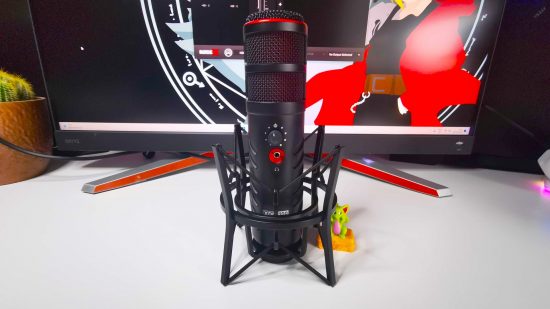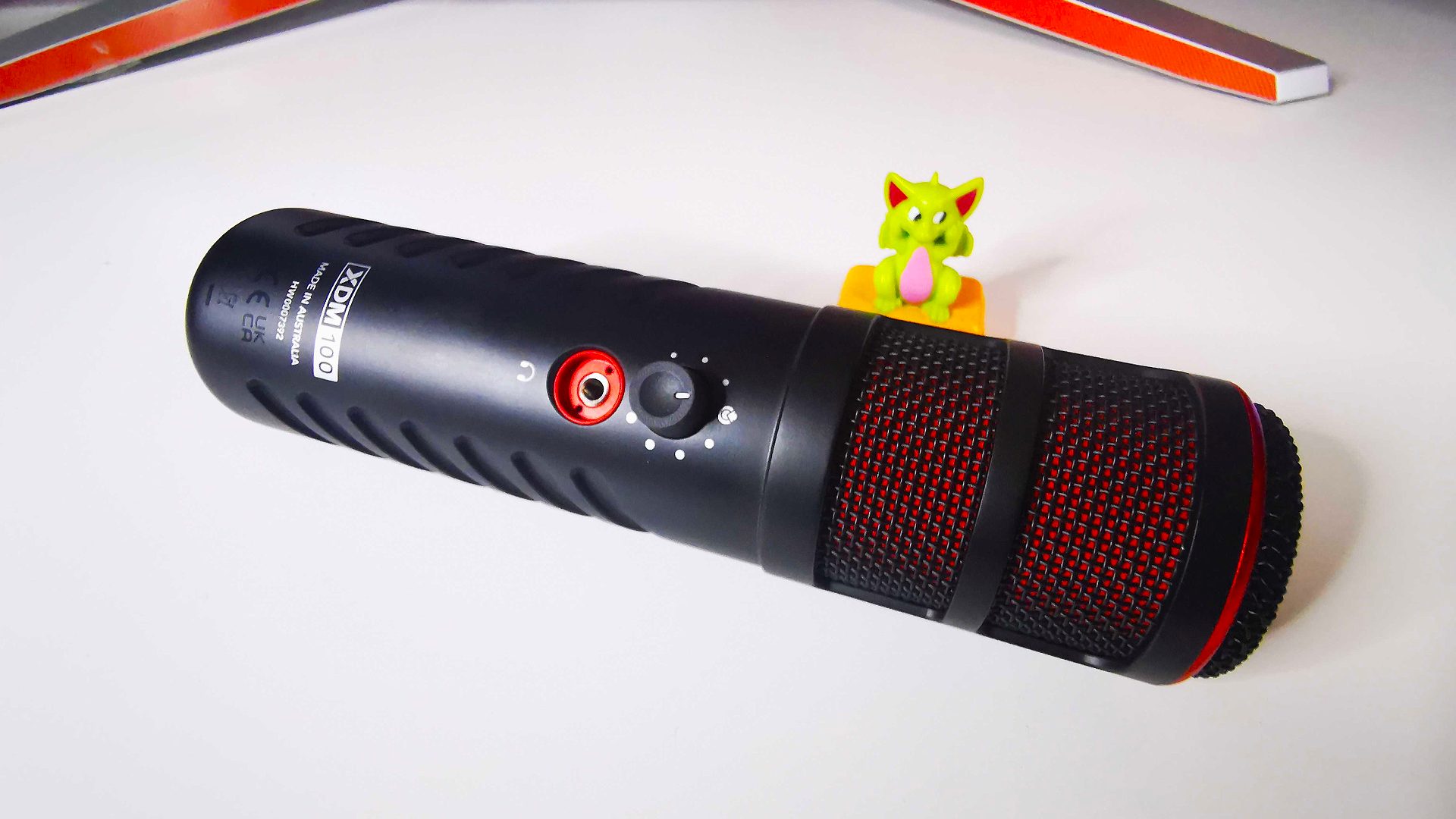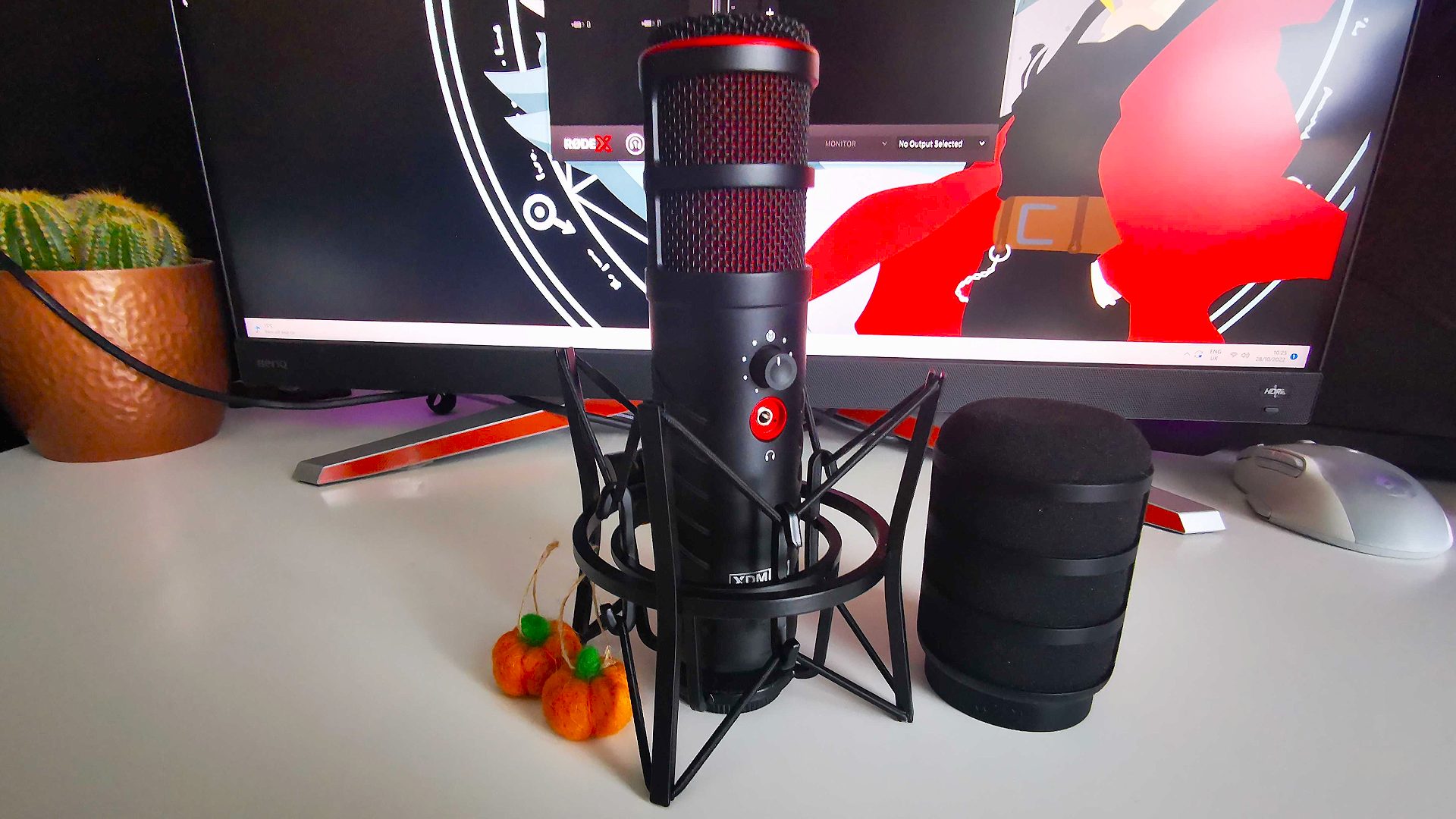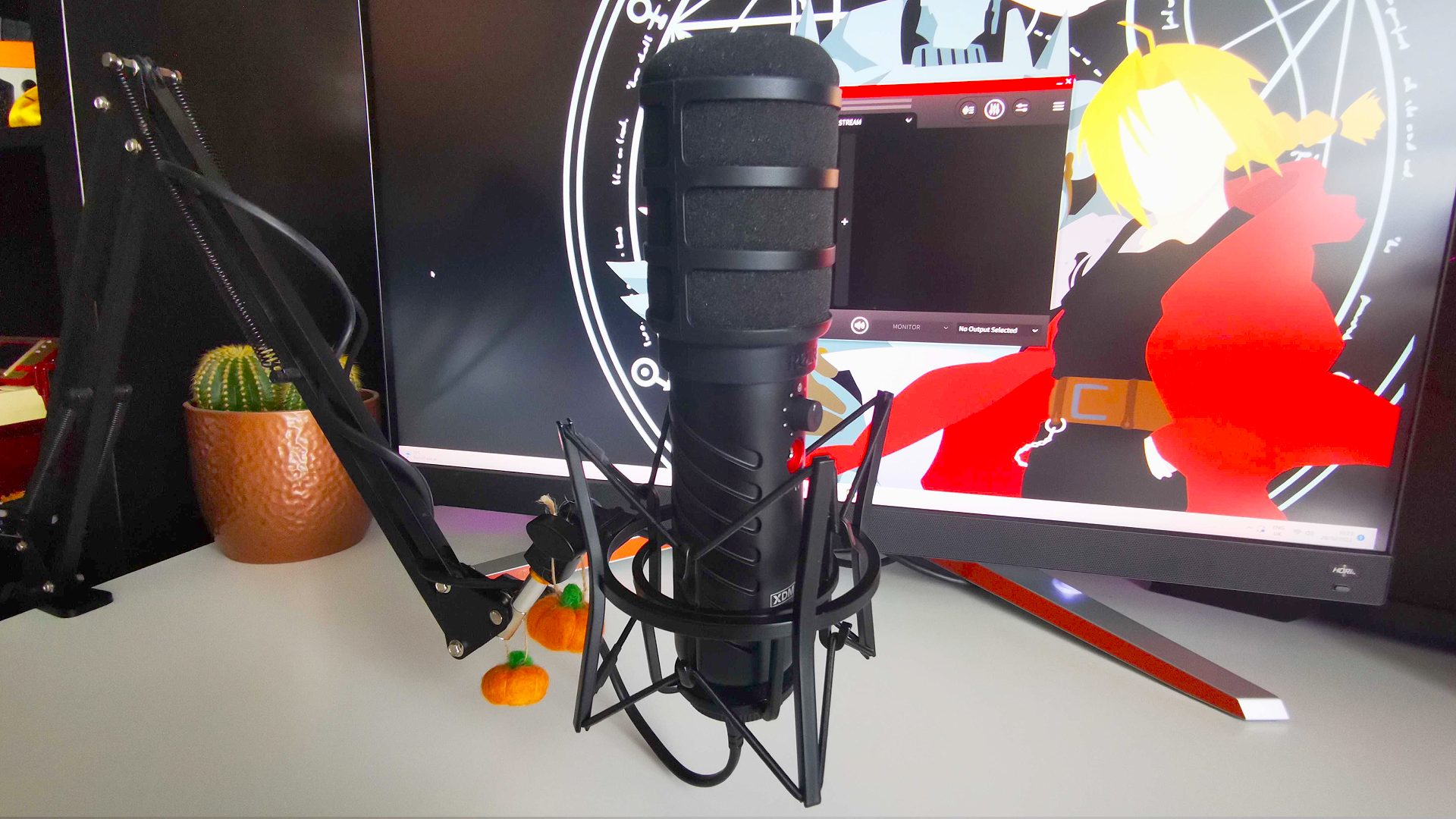Our Verdict
A brilliant USB-C gaming mic that'll save Twitch streamers from buying a complete XLR setup, but Rode's remarkable audio abilities come with a lofty price tag attached.
- Excellent audio quality
- Solid build quality
- Virtual mixing software
- Lofty price
- Only one polar pattern
The Rode X XDM-100 is the audio company's gift to the Twitch streamer market, as it's a superb gaming microphone that'll elevate your gaming setup tenfold. Sure, it's a USB-C mic that prioritises convenience, but I'd argue it quashes the notion that XLR devices are necessarily better, especially when it comes to gaming PC content creation.
You could say that the Rode X XDM-100 arrives with a reputational advantage, as the Australian firm is already renowned for its high-quality audio hardware. That might go both ways, as I expected a lot from the company upon hearing about its new gaming division and its ambitions. Thankfully, the dynamic mic newcomer boasts all the qualities you’d expect from a Rode mic, even if its price is a bit rich for my blood.
Commanding a $249 USD / £269.99 GPB price tag, the Rode X XDM-100 undoubtedly targets seasoned streamers looking to create the best gaming PC setup possible. That’s not to say newbies shouldn’t consider picking one up, but I wouldn’t blame you for flinching at its premium MSRP. However, the high-end USB-C mic puts a strong case forwards for its cost, and accompanying software fortifies its potential position at the top.
Rode X XDM-100 specs
On paper, the Rode X XDM-100 is comparable to the Blue Yeti X and Elgato Wave 3, offering a dynamic capsule, USB-C connectivity, and a wide 20 Hz – 20 kHz frequency range. Its 24-bit bit depth also helps to earn a place on our best gaming microphone list, even if its pattern options are limited to just cardioid.
| Rode X XDM-100 specs | |
| Sample Rate | 48kHz |
|---|---|
| Bit rate | 24-bit |
| Frequency response | 20Hz – 20kHz |
| Polar patterns | Cardioid |
| Connectivity | USB-C , 3.5mm for listening |
Pros
- Superb audio quality.
- Excellent build quality.
- Sleek design.
Cons
- Eyewatering price.
- Only one pickup pattern.
What might appeal to some audio enthusiasts, particularly those familiar with Rode’s tech, is the mic’s Revolution Preamp. Designed originally for the Rodecaster Pro II, the internal amplifier somewhat negates the need for additional processing and gain enhancements, and it really helps Rode’s gaming mic shine.
Rode X XDM-100 design
Not every gaming-orientated peripheral has to be clad in garish RGB lighting, and Rode certainly sticks to what it knows with the XDM-100. That said, the mic is clearly related to the Procaster, featuring the same sleek black finish, pleasingly premium metal shell, and subtle ridges that scream “I’m a professional studio mic.”
Could Rode have created a mic that stands out from the crowd more? Maybe, but whether or not that’s a good thing depends on your own personal tastes. If you’re a streamer that’s looking to put on a show with an eye-catching setup, you’d probably prefer something striking like the Logitech Blue Sona. Otherwise, you’ll get on just fine with the XDM-100’s understated appearance.
Naturally, there are other differences between the XDM-100 and Procaster, as there’s a headphone jack and volume dial on the mic’s face. You’d be surprised how many companies miss the mark when it comes to manual controls, but Rode’s dinky dial is smooth, responsive, and the built-in mute button wins me over with its clickiness.
Not all mics come with additional accessories, but the Rode XDM-100 comes packaged with a PSM1 Shock Mount. It’s a solid freebie, and it sort of functions like a makeshift stand, but it’s more or less designed to be used with an arm. That’s the road I went down for the sake of testing, but the XDM-100’s standing mounting thread should support a variety of stands and tripods.
The XCM-100 does also come with a pop filter, but I’d still advise using a standalone shield if you’re looking to eliminate those pesky Bs and Ps. It certainly works in a pinch, and it’s worth using anyway for the nifty little light tube that enables the mic’s blue LED to pierce through (it really contributes to the aesthetic).
Rode X XDM-100 performance
I’ve used a few different USB mics over the years, and the Rode X XDM-100 managed to impress me quicker than anything else I’ve tried. Clarity is at the forefront of the experience, and it’s hard to poke any holes in the microphone’s capturing capabilities. Rumbly lows and crisp highs make Rode’s dynamic option a gaming audio heavy hitter, and Twitch viewers will notice the difference.
Of course, if you’re using the best gaming mouse, you won’t want its clicky buttons spoiling your dulcet tones. That’s where Rode’s cardioid pattern choice comes into play, as it’ll enable you to position things just right to avoid any unintentional background ASMR effects.
As for distance, you won’t want to venture too far from the XDM-100, as doing so will result in a slight quality dip. There’s nothing stopping you from increasing gain, but cranking things up will eliminate the benefits bought about by low sensitivity.
If more USB mics like the XDM-100 pop up, I reckon we’ll see fewer professional content creators and streamers switch over to XLR setups. While you can pick up an Elgato Wave DX and an interface for slightly less than Rode’s standalone option, not having to clutter your gaming desk with a mixer is arguably worth the extra $16. Not to mention you’ll still have access to virtual volume dials and channels using the company’s newly released software.

Rode X XDM-100 software
Rode’s gaming mic ambitions aren’t just hardware-based, as the company has cooked up a comprehensive virtual audio mixer. Dubbed Unify, the software package bears resemblance to the likes of Elgato Wave Link, but its colour scheme looks a bit more like an edgy Fisher Price app.
Colour scheme gags aside, I’m actually a big fan of Unify, and I like that it mimics the layout of Rode’s physical Rodecaster Pro mixing desk. I’d suggest getting properly acquainted with the software before diving in, but its intuitive design makes using it on the fly fairly easy, as Rode X mics will instantly show up within the app.
Unify also includes ‘Aphex’ – an advanced processor that’ll let you fine-tune your audio using presets and a noise gate. Tools like this are a godsend if you’re looking to remove excessive background noise, and the software does a pretty good job of filtering it out. I also dabbled with the ‘exciter’ and ‘big bottom’ presets, which work well as optional equalisers but aren’t revolutionary.
It’s worth noting that while Rode Unify comes free to use with XDM-100 and XCM-50, it’s actually a subscription service. So, if you’re planning on using the software without a Rode X mic, it’ll set you back $5 USD a month. You could say the fact it’s bundled with the mic adds to its value, but it feels like it shouldn’t be classed as a freebie.
Simply put, the XDM-100 is a fantastic gaming mic that trades blows with the best XLR setups. Its MSRP is loftier than I’m comfortable with, but it’s not entirely unreasonable when you take its premium build, sound quality, and Unify software support into consideration. So, if you do have $250 USD to spare on a microphone and cheaper USB alternatives like the Blue Yeti aren’t up to snuff, I’d recommend splashing out on this impressive Rode X ripper.



